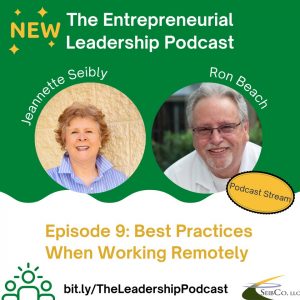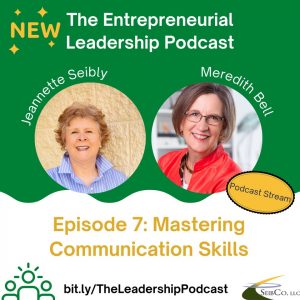
Honoring your grief can be difficult as a leader and normally strong person. Throughout our careers, we’re taught to be stoic, mentally tough, and strong in the face of adversity. Unfortunately, these traits and others fail to support us during life’s unalterable challenges.
When my cat, Gracee, passed away suddenly two weeks ago, I was devastated. My counselor said, “No more work for the next two days.” This was despite my excuses. She added, “Do not make life decisions at this point either. You need time to honor your grief.” I followed her advice and can see (and feel) the difference.
The death of a spouse, parent, child, sibling, family member, or pet can be devastating, even when we believe we are ready for it. A professional woman denied that people needed to feel and deal with their grief. She thought she was completely prepared and too strong to experience grief … until her mother died. Then, she understood that grief happens to all of us regardless of our opinions about it.
The following are some other ways you may experience grief due to fear and not feeling safe in today’s world (the list is not intended to be inclusive):
- Divorce and loss of home
- Job loss or working in a job you hate
- Natural weather disasters
- Health issues
- Loss of money
- Failure at work
- Outside factors (e.g., pandemic, school shootings, political rhetoric, and economic uncertainty)
Here are ideas to help you honor your grief:
- Talk with a therapist or grief counselor. They are skilled (and licensed) to guide you through the five common stages of grief: denial, anger, bargaining, depression, and acceptance. These stages can happen all at once. Having an experienced counselor to talk through your challenges can help you avoid making decisions that are not in your best interest.
- Take Time … Grief Is Not a Quick and Easy Process. You may need to take time beyond your company’s bereavement policy. If it is a job loss, work with a career counselor after taking time to process your anger and cry. Talk with a business advisor if it is due to a business loss. The key is to honor, and not ignore, the grief while taking the actions required to move forward.
- Journal for your eyes only. A University of Michigan study has shown that writing can engage the brain differently. This allows you to dig deeper to find peace. Remember, do not send out your letters. To repeat, these are for your eyes only. For me, it helped me realize Gracee was now well and at peace and to be grateful for our time together.
- It’s OK to Cry. Yes, tears do help and can erupt at any time. Allow them to do so now to avoid additional stress in your body. For example, if you are in a meeting, excuse yourself. Cry. Then return to your meeting if you can and be present. I stopped wearing mascara for three days.
- Set Up a Tribute or Memorial. There are so many ways of doing this. Social media makes it easier. Be sure to talk with other family members first. In last week’s newsletter, I included “In Memory of the COO in my life” and included a cute cat picture of Gracee. It really helped.
- Health Wise. Self-care is essential during this time. Exercise, rest, and eat appropriately. Yes, it may be challenging to do so … but not doing so can hurt your health and well-being.
- Stay in Communication. Reach out. If you’re unable to talk, simply listen. Work with your therapist or let a friend know if you need to vent. Be responsible for not making judgments or burning bridges that could hurt your job or career in the future.
Something to consider: An executive refused to grieve after surviving a natural weather disaster where she lived. Months later, she experienced an executive meltdown and lost her job. This might not have happened if she had taken the time to honor her grief.
©Jeannette Seibly 2023 All Rights Reserved
 Jeannette Seibly is The Leadership Results Coach. With over 30 years as an award-winning international executive coach, speaker, and business author, Jeannette’s clients effectively work through sticky situations and challenging relationships to become positive influencers. Contact Jeannette for a confidential discussion. PS: She’s also a three-time Amazon Best-Selling Author!
Jeannette Seibly is The Leadership Results Coach. With over 30 years as an award-winning international executive coach, speaker, and business author, Jeannette’s clients effectively work through sticky situations and challenging relationships to become positive influencers. Contact Jeannette for a confidential discussion. PS: She’s also a three-time Amazon Best-Selling Author!
A note from Jeannette about honoring your grief: Many leaders and other normally strong people don’t take the time to grieve. They believe it hurts their credibility and can create a loss of respect. But failing to honor your grief will come out at some time and somewhere if you don’t honor it now. Contact me for a confidential conversation when you’re ready to move forward. (I’m not a licensed therapist.)
NOTE: Life has a way of throwing you challenges that move you into unknown situations at work and in life. I love coaching and supporting current and future leaders during these transitions. Contact me if you want an in-depth, one-on-one hour over 13 weeks. Remember, coaching speeds up your ability to develop the confidence, competence, and clarity required to be a great leader.
 Your managers need your help! They are being held accountable for results and people, and many don’t have the skills to do it well! Therefore, they fail to achieve the intended results! It’s time to provide an Effective Manager and Director Workshop and ongoing coaching. The company’s increase in retention, revenues, and results will thank you! Contact me for a confidential conversation.
Your managers need your help! They are being held accountable for results and people, and many don’t have the skills to do it well! Therefore, they fail to achieve the intended results! It’s time to provide an Effective Manager and Director Workshop and ongoing coaching. The company’s increase in retention, revenues, and results will thank you! Contact me for a confidential conversation.


 Jeannette Seibly is The Leadership Results Coach. With over 30 years as an award-winning international executive coach, speaker, and business author, Jeannette’s clients effectively work through sticky situations and challenging relationships to become positive influencers. Contact Jeannette for a confidential discussion. PS: She’s also a three-time Amazon Best-Selling Author!
Jeannette Seibly is The Leadership Results Coach. With over 30 years as an award-winning international executive coach, speaker, and business author, Jeannette’s clients effectively work through sticky situations and challenging relationships to become positive influencers. Contact Jeannette for a confidential discussion. PS: She’s also a three-time Amazon Best-Selling Author! How’s your leadership development progressing? Are you moving forward … or a tad stuck? Do you need a “nudge” and “clarification?” Want to accelerate and soar your results?
How’s your leadership development progressing? Are you moving forward … or a tad stuck? Do you need a “nudge” and “clarification?” Want to accelerate and soar your results? 
 Announcing New Workshop! Traditional leadership (e.g., formal, metrics-driven) is being replaced with human leadership (e.g., focus on the human dynamics that impact results). For example, “That’s how it’s always been done.” vs. “Great idea. How do you recommend we implement it?” However, your managers and directors are being overlooked regarding the training required to be an effective boss and leader. Read about my newest workshop:
Announcing New Workshop! Traditional leadership (e.g., formal, metrics-driven) is being replaced with human leadership (e.g., focus on the human dynamics that impact results). For example, “That’s how it’s always been done.” vs. “Great idea. How do you recommend we implement it?” However, your managers and directors are being overlooked regarding the training required to be an effective boss and leader. Read about my newest workshop: 
 This week’s PODCAST: Listen to Want to Achieve Great Results? Use Peer Coaching with my guest, Meredith Bell, on
This week’s PODCAST: Listen to Want to Achieve Great Results? Use Peer Coaching with my guest, Meredith Bell, on 
 This week’s PODCAST: Listen to How to Be an Effective Advocate and Be Heard with my guest, Jill Tietjen, on
This week’s PODCAST: Listen to How to Be an Effective Advocate and Be Heard with my guest, Jill Tietjen, on 
 This week’s PODCAST: Listen to “Best Practices When Working Remotely” with my guest, Ronald Beach, Ph.D., on
This week’s PODCAST: Listen to “Best Practices When Working Remotely” with my guest, Ronald Beach, Ph.D., on 
 This week’s PODCAST: Listen to Grow your side hustle into a full-time job with my guest, Bobby Crew on
This week’s PODCAST: Listen to Grow your side hustle into a full-time job with my guest, Bobby Crew on 
 This week’s PODCAST: Listen to the Mastering Communication Skills with my guest, Meredith Bell, on
This week’s PODCAST: Listen to the Mastering Communication Skills with my guest, Meredith Bell, on 
 This week’s PODCAST: Listen to How the pandemic led a professional copywriter, speaker and author to become an accidental artist with my guest, Debra Jason, on
This week’s PODCAST: Listen to How the pandemic led a professional copywriter, speaker and author to become an accidental artist with my guest, Debra Jason, on 